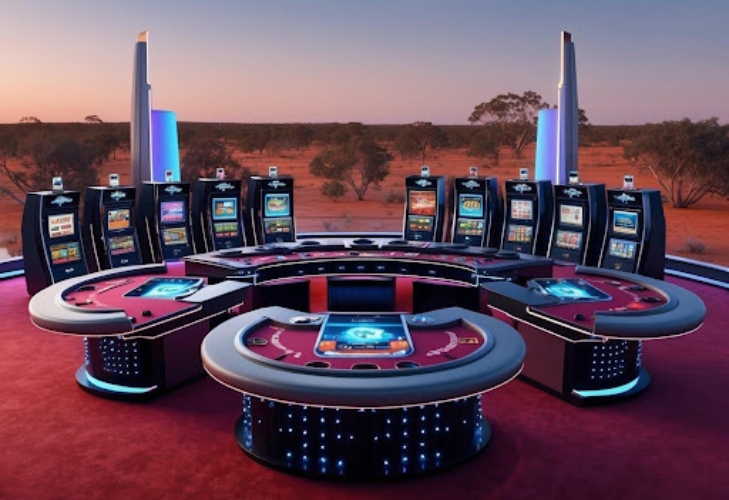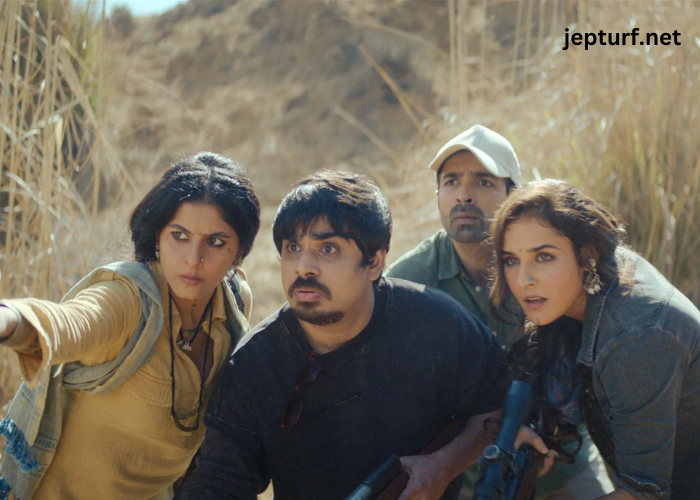In a world where technology constantly evolves, one thing remains constant – our love for entertainment. From the dawn of human civilization to the present day, storytelling has been an integral part of our culture. It has taken various forms, adapted to the tools and mediums available at different points in history, but the essence of entertainment remains the same – to captivate, inspire, and connect with audiences. This article embarks on a journey through the vast and ever-evolving entertainment universe, exploring its history, evolution, and the impact it has on society.
The Dawn of Entertainment
Entertainment is a fundamental aspect of human existence. Even in prehistoric times, our ancestors found ways to entertain themselves and communicate their stories. Cave paintings, for example, can be seen as one of the earliest forms of visual storytelling. These primitive artists used pigments made from minerals and plants to depict scenes of daily life, hunting expeditions, and their beliefs in a way that captivated and educated those who came after them.
As civilizations evolved, so did their methods of entertainment. Ancient Egyptians, for instance, engaged in various forms of entertainment, including music, dance, and dramatic performances. Their hieroglyphs provide evidence of these activities, depicting musicians, dancers, and actors. Similarly, ancient Greece introduced the concept of theater to the world, with playwrights like Aeschylus, Sophocles, and Euripides crafting powerful dramas that explored the human condition.
The Golden Age of Literature
As history progressed, storytelling evolved in tandem with human culture and technological advancements. The written word became a powerful medium for entertainment, enabling authors to share their stories with a broader audience. The invention of the printing press by Johannes Gutenberg in the 15th century revolutionized the dissemination of knowledge and entertainment. It allowed books to be produced more efficiently, making them more accessible to the general populace.
This period saw the emergence of literary classics that continue to captivate readers to this day. Works like William Shakespeare’s plays, Miguel de Cervantes’ “Don Quixote,” and Jane Austen’s novels defined the literary landscape and offered insights into the human condition, societal norms, and timeless themes of love, ambition, and morality.
The Birth of Cinema
The late 19th century marked the birth of a revolutionary form of entertainment: cinema. Thomas Edison and the Lumière brothers were among the pioneers who developed early motion picture technologies. The Lumière brothers’ 1895 screening of short films in Paris marked the beginning of the cinematic journey. This new medium rapidly gained popularity, providing audiences with a thrilling and immersive experience they had never encountered before.
The silent era of cinema gave rise to iconic figures like Charlie Chaplin, Buster Keaton, and Harold Lloyd, who used physical comedy to communicate with audiences worldwide. The arrival of synchronized sound in the late 1920s with films like “The Jazz Singer” signaled a new era of storytelling, one that combined visual and auditory elements to create a more immersive and emotionally resonant experience.
The Rise of Television
While cinema continued to flourish, another medium was emerging in the mid-20th century that would change the way we consume entertainment – television. With its ability to bring stories and information directly into people’s homes, television became a dominant force in the entertainment landscape. Families gathered around the TV to watch shows like “I Love Lucy,” “The Twilight Zone,” and “The Ed Sullivan Show,” creating shared cultural experiences.
Television also became a powerful tool for education and news dissemination. Events like the moon landing in 1969 were witnessed by millions worldwide, showcasing the medium’s ability to unite humanity in shared moments of wonder and achievement.
The Digital Revolution
The late 20th century brought another major technological shift in entertainment – the digital revolution. With the advent of personal computers, video game consoles, and the internet, entertainment became more interactive and accessible than ever before. Video games offered immersive storytelling experiences, allowing players to become protagonists in their own adventures.
The internet, in particular, opened up a new frontier for entertainment. It allowed for the instant distribution of content, from music and movies to articles and social media updates. Streaming platforms like Netflix, YouTube, and Spotify transformed the way we consume media, providing on-demand access to an unprecedented variety of content.
The Power of Visual Effects
In the realm of film and television, the use of visual effects (VFX) has played a pivotal role in shaping the entertainment landscape. Advances in VFX technology have allowed filmmakers to create visually stunning and fantastical worlds that were previously impossible to bring to life. Movies like “Jurassic Park,” “Avatar,” and “The Lord of the Rings” trilogy showcased the potential of VFX to transport audiences to otherworldly realms.
Not only do visual effects enhance the storytelling experience, but they also provide new opportunities for creative expression. Directors and artists can now explore complex themes and ideas through the lens of the fantastical, pushing the boundaries of what is visually possible.
The Streaming Wars
The 21st century ushered in a new era of entertainment with the rise of streaming services. Companies like Netflix, Amazon Prime Video, Disney+, and Hulu have transformed how we access and consume content. These platforms offer an abundance of original series, films, and documentaries, catering to a wide range of tastes and preferences.
The streaming wars have led to a surge in high-quality content production, with studios and streaming giants investing heavily in original programming. This has given rise to acclaimed series like “Stranger Things,” “The Crown,” and “Game of Thrones,” which have captivated global audiences and sparked discussions on social and cultural issues.
The Influence of Social Media
In the digital age, social media has become an integral part of the entertainment landscape. Platforms like Facebook, Twitter, Instagram, and TikTok provide a space for fans to connect with their favorite creators, share content, and participate in fan communities. Social media has also amplified the voices of underrepresented groups, enabling them to advocate for more diverse and inclusive storytelling.
Celebrities and influencers use social media to engage directly with their followers, giving fans a behind-the-scenes look at their lives and careers. This level of access has reshaped the way we perceive and interact with public figures, blurring the lines between celebrity and audience.
The Globalization of Entertainment
As technology continues to shrink the world, entertainment has become a global phenomenon. Movies, music, and television shows from different cultures and languages now have the potential to reach audiences worldwide. This globalization of entertainment has led to a greater appreciation of diverse perspectives and narratives.
Korean cinema, for example, has gained international acclaim with films like “Parasite” winning prestigious awards such as the Academy Award for Best Picture. Similarly, K-pop music has become a global sensation, with groups like BTS achieving massive success and a dedicated global fanbase.
The Future of Entertainment
Looking ahead, the future of entertainment promises even more innovation and evolution. Virtual reality (VR) and augmented reality (AR) technologies are poised to transform how we experience storytelling, allowing us to immerse ourselves in interactive and immersive narratives. AI and machine learning are being used to create personalized content recommendations and even generate original music and art.







